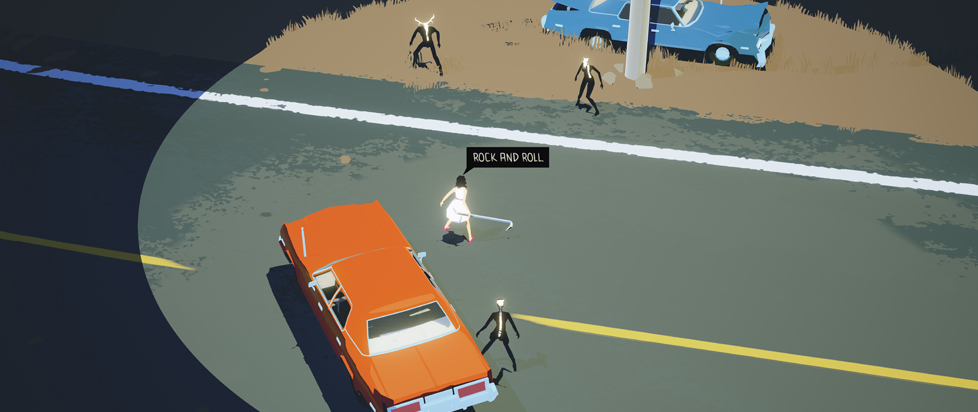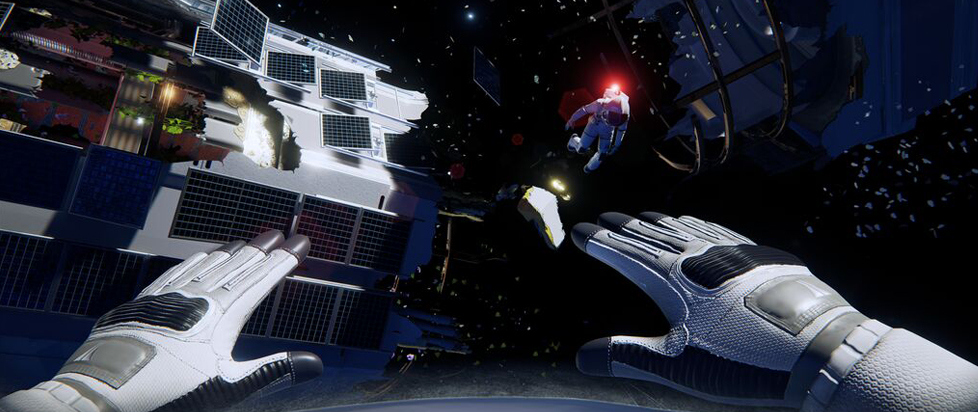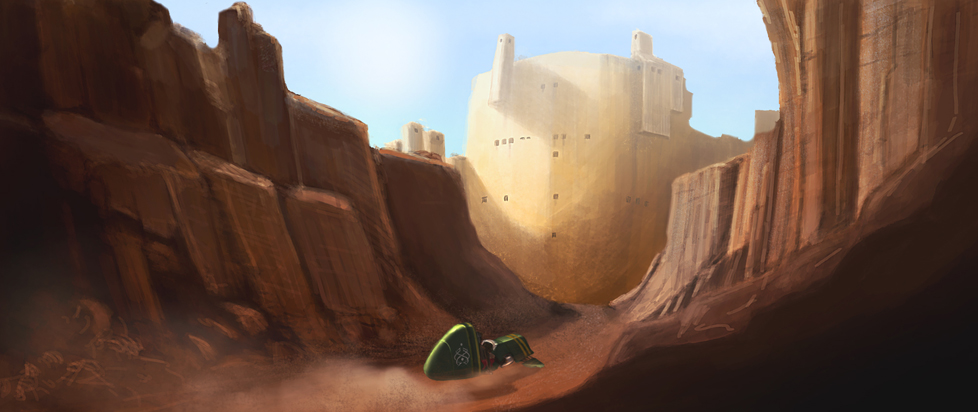
Revving the Engine: Outlaws
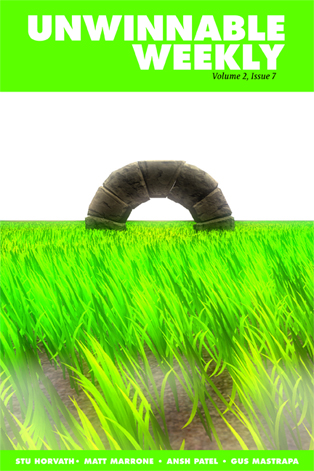 The following is a reprint from Unwinnable Weekly Issue Fifty Nine. If you enjoy what you read, please consider purchasing the issue or subscribing.
The following is a reprint from Unwinnable Weekly Issue Fifty Nine. If you enjoy what you read, please consider purchasing the issue or subscribing.
This series of articles is made possible through the generous sponsorship of Epic’s Unreal Engine. While Epic puts us in touch with our subjects, they have no input or approval in the final story.
———
When I spoke to the folks behind UE4 for Wired’s feature on the engine, much was made of “bake times,” that is, the time between building your digital world and being able to see it in action. Depending on the complexity of the project, that bake time could last anywhere from a few hours to several days as it is processed on the thousands of CPUs that make up a rendering farm. If there is the tiniest of errors? You’ve just wasted a huge chunk of production time.
Think of it like a photographer who has arranged an elaborate scene but is working with a camera that has no viewfinder or controls. They snap the picture blindly and send the film to be developed. Only when the prints come back do they know if the picture was in focus or not.
Epic was keen to change that and one of the innovations of UE4 is real time rendering. Code changes are compiled on the fly. If you goof up, you can drop right in and fix the problem right away. No bake time, no rendering farm. What you see is what you get.
As I mentioned, bake time scales with complexity. As elaborate as many videogames are, they pale in comparison to digitally animated films like Up or How to Train Your Dragon, which require a tremendous amount of visual fidelity and staggering rendering times to match. Removing bake time from that production pipeline would be nothing short of revolutionary.
That’s exactly what Jason Edwards and Greg Meeres-Young are trying to accomplish with Outlaws, a full-length science fiction animated film created entirely in Unreal Engine 4.
Before we get started talking about Outlaws, can you tell me a bit about your backgrounds?
Greg: I have been in VFX for over 10 years now, predominantly working on Hollywood blockbusters. I started off in the R&D department coding frontline artist tools and pipelines, but moved into the lighting department where I could produce the final images seen on the screen. I am currently a lighting & rendering supervisor at Double Negative in London.
Jason: I’m currently working at Framestore in London.
I grew up in Borehamwood/Elstree, or the English Hollywood as it was known. As a kid I lived in a household where filmmaking was the norm. Both my grandparents worked in the industry, my grandfather as a chemical color timer and my grandmother as a film splicer. My father was originally a documentary film editor at MGM studios in Elstree outside of London before moving into sound effects recording at EMI Elstree Studios.
My father worked on television and film classics such as 2001, Thunderbirds, Captain Scarlet, UFO, a few Bond movies, Alien, Blade Runner, Tim Burton’s Batman and a host of others. In particular, a small film called Star Wars was made at Elstree in 1976, and because he worked on it I was lucky enough to view a dismantled X- Wing fighter after production had wrapped. I still believe that was the catalyst that really started me on the path of working in film. After seeing that movie, all I wanted to do was make models from balsa wood and plastic bits and pieces.
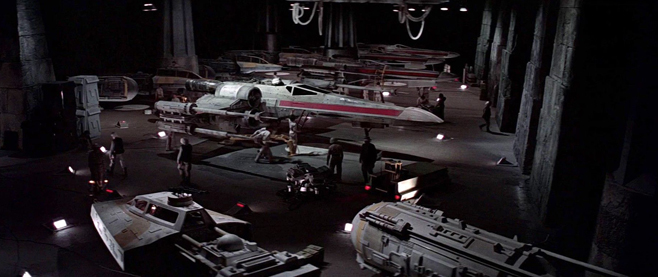
A lot of the ships and alien tests I’ve seen for Outlaws feel very reminiscent of the original Star Wars trilogy. They have that weight and attention to detail you usually only get from models. Was modelling a big influence for you?
Jason: I became obsessed with model making at around 9-years-old, just kit building Airfix and Revell stuff. After seeing a full-sized Millennium Falcon on the set of The Empire Strikes Back and, shortly after, visiting the Well of Souls set on Raiders of the Lost Ark, everything went into a higher gear. I began taking photos on an instamatic camera of scenes I’d build of spaceships and plastic figures to make a film out of stills. By the time I reached my teens I’d been given a couple of Super 8 cameras and began making short war films with friends and playing around with the camera, reversing footage to create weird scenes.
Later on I started dabbling in animation, creating stop motion films with toys like Action Man and the Six Million Dollar Man. There was even a stop motion movie of a homemade 8-inch Star Wars speeder bike cobbled together with balsa wood and copper pipe flying across our garden. I mixed in ‘normal’ footage with the bike stuck to the camera to create front views zooming around the grass and through broken branches, like they did with the Steadicam on Return of the Jedi.
So were you the director? Or the special effects guy? Or both?
Jason: I was always the guy in our group who would draw the storyboards so we had something to go by. We wanted to be like the pros!
I would take inspiration from seeing Joe Johnston’s boards and Ralph McQuarrie’s paintings in the art of Star Wars, putting in the little 3D arrows for a camera pan or for scene direction. It was the same for model making; Lorne Peterson of ILM was always the guy I’d read about when it came to models. I was just hooked by it all. I would be the guy who would spend hours and hours locked away in his small bedroom, building the miniature stuff and painting it all up.
If we needed things like smoke for a miniature set, we’d tape down a boiling kettle so there was constant steam, or for small blasts, we’d rig a rubber tube to a deodorant can and spray it. I think basically anything we could create, animate and destroy, we put in front of the camera.
Looking back it wasn’t a very healthy environment in my room .The windows were open constantly because of glue and paint. My Mom was concerned about all the chemical hazards but my Dad knew exactly what I was doing and left me to it, and at the end of the day it all looked great on Super 8mm. Well, to us it did. Every Christmas we’d make sure each film was ready and have a premier with all the cast and crew.
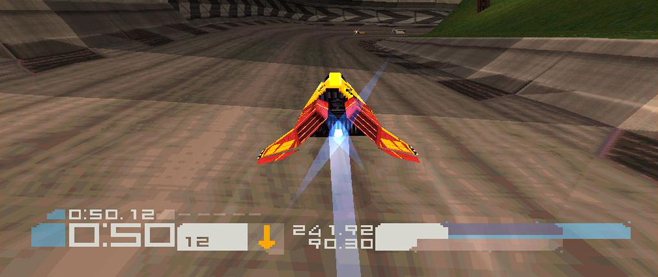
How did you transition from this very analog childhood to 3D animation?
Jason: 3D didn’t actually happen until around 1996.
I’d been using Photoshop since ‘94 in my day job restoring pre- and post-war photos. I was having trouble with the restoration job of a car fender and just couldn’t do it because of reflection issues. I was aware of some free 3D software called Stratavision and I learned what I needed in a very hacked kind of way. I created a fender, rendered the image with a sky reflection on it, comped it back in to the photo with some light noise filtering and it worked!
It was shortly after that I began to see more 3D imagery; one in particular was from Wipeout, the PlayStation game. It was this one image of the hovering racers that sold me on what could be achieved in 3D and I set about learning the Stratavison 3D software properly in my evenings after work. Around the same time I was invited to the Magic Camera Company at Shepperton Studios to see how they were achieving digital effects on the Bond film, Goldeneye. These guys were using Lightwave.
By 1997, I was immersed in learning 3D from the ground up. I was pretty stoked, too, as Star Wars had just been re-released in its special edition form. It was not to everyone’s taste, but it was out there and it inspired me to finally move forward into film and start developing my own projects.
How did Outlaws get started?
Jason: If I were to pinpoint when Outlaws began, I would have to say late 1997. It was after seeing the Star Wars Special Edition that the gears began to turn. I’d spent a long, boring fortnight during the summer, down in the Kent countryside, housesitting a huge 200-year-old cottage for a relative in the middle of nowhere (creepy stuff) and had taken my sketch books with me. I started designing characters and situations for what was then called Project X. I was frustrated in a way, too, because I wanted to get a computer to start building stuff, no matter how bad it all looked. I was just raring to get something down.

You originally envisioned Outlaws as a graphic novel?
Jason: In 1999, I joined a company called Graphic FX (later rebranded to Striker 3D), near London’s famous Canary Wharf. It was a small company that specialized in 3D comic strips and advertising for a national newspaper here in the UK. We were using Lightwave and Poser at the time to create characters and environments on a daily basis.
After a year or so of working on their strips, I convinced myself that Outlaws would be good as a graphic novel. By 2004, the project became known as Outlaws Tales and, around 2005, I released an early website with a chapter of Outlaws on it. All in glorious 3D.
In the middle of 2006, I decided to go right back to the beginning of the project, scrap all the old artwork and start over. The aim this time was to build every asset for the first chapter in one go, get the main character right and set the standard for the rest.
May 2007 saw Outlaws return to the internet as a graphic novel. It was definitely bigger and better. I revamped the website so the reader could flick back and forth between pages and leave comments. It was an instant hit. I was getting over 70,000 hits a month from a worldwide audience, without any advertising. I found I could work on the new pages for around two weeks before releasing it online and the same audience would still be there. It was quite incredible.
This went on for a while, until 2010, when work and other projects and dodgy publication offers forced Outlaws into a hiatus.
When did you get back to Outlaws? And how did you decide to make it into a movie?
Jason: Summer, 2014. I received an email from Greg Meeres-Young, a friend of mine who I’d worked with the previous year. He was returning to the UK after a stint at Weta Digital in New Zealand, so we met for lunch and caught up a year’s worth of gossip
During this lunch, Greg spoke to me about Unreal, what he’d been doing with it and how cool it would be to integrate it into areas of VFX work. It was fascinating stuff to me, as I’d always associated Unreal with games and here was Greg showing me how it could be used in our line of work. This in turn led the conversation to Outlaws.
Over the following weeks, Greg showed me the power of Unreal with some 3D scenes he’d set up…I was just blown away, it was incredible. I must have bored him silly. I had so many questions, including something along the lines of “Why aren’t we using this in VFX, instead of using the big render engines?” None of it made sense after seeing Unreal in action.
From this point on, it was a no brainer to revisit the world of Outlaws. Greg and I partnered Outlaws and Nagapi Productions to create the company’s first movie using Unreal technology. The project has had a meteoric rise in a very short space of time, with the pair of us pushing one another constantly. The results have been tremendous so far, and this is just the beginning.

How big is the team working on Outlaws?
Greg: It’s a small team – just Jason and I at the moment. Very small if you compare us to a usual production team comprising hundreds of people across multiple departments. It’s good to be small at the start as we can easily pivot to accommodate any technical curve balls thrown at us. It means we both wear multiple hats, but in general we fall into a good rhythm as we both specialize in deferent areas of VFX. We are currently tearing through the build phase of the project – Jason does the modelling and I then take the assets through Unreal.
What is Outlaws about?
Jason: Outlaws is essentially a Western in space, a big one. It’s set in a lawless galaxy where the police have had to become bounty hunters, for various reasons. There’s a huge back story, of course, but we’re keeping that away from prying eyes until we need it. Outlaws is an anthology of stories, kind of like the old Stephen King movie Creepshow, but the stories intertwine with one another and characters may or may not cross paths.
This particular part of Outlaws that we are working on focuses on a female bounty hunter who, on her journey home, receives a distress signal from a planet being over taken by a crime lord. She intervenes to resolve the conflict, but she ends up facing more than just the bad guy – she has to confront her past as well.
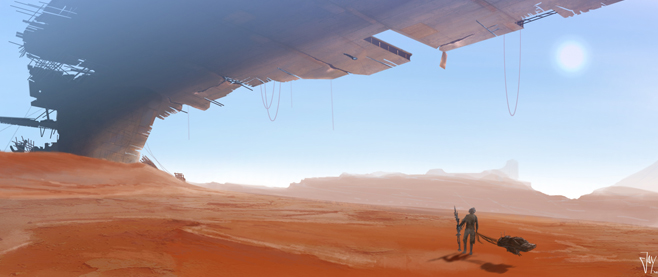
What specific sci-fi and other genres inspire Outlaws?
Jason: Well, if you took away the Star Wars elements of inspiration throughout the early drafts of Outlaws, there are a couple of things I would say stick out, but not much in the way of sci-fi. Sergio Leone’s Spaghetti Westerns are a key factor. The shear look of those films is enough to inspire anyone. From the grit under the fingernails, to the fantastic, wide vista shots, to the extreme close up of characters eyes during the face offs. They are very raw. The characters in the Leone movies definitely inspired those of Outlaws, I have no doubts there.
There’s also the iconic film Lawrence of Arabia, a beautifully shot masterpiece. The vistas in this film are just epic and captivate me as an artist, the scale of the shots are immense. Outlaws will be doing the same. I have a fascination with deserts and I have unearthed a lot of wonderful material on the internet to use for reference.
Finally, I have to say Mad Max is a key role model for Outlaws. I was always enamored by the second and third movies in that early trilogy, and more recently Fury Road. Outlaws could be something from the world of Mad Max, without the wheels, but with a good story, interesting characters and a great ride!
Why Unreal Engine?
Greg: The stars aligned! I was burning the midnight oil on the final months of a film project where renders were taking 5 days to come off the farm before I could see any results. As with any production at crunch time, it was stressful, but this time it was particular acute. I was rendering shots worth thousands of dollars with one chance to get it right. After meticulous tweaking, I wouldn’t know if my hard work paid off for several days. To relax at night before I collapsed into bed I would fire up The Last of Us on my PS3. I was envious of the beautiful world that was being generated in real time on this one machine whirring by my feet as my renders cooked on hundreds of CPUs at work. This crass disparity clicked a switch for me. I decided then and there I wanted to re-write the way the VFX industry was doing things and use games tech to do it.
It was about that time UE4 announced it was to become available for a nominal monthly subscription fee. With a vibrant community and many of the features I was looking for, it was a no-brainer technology for me to use. From the moment I started throwing VFX assets at it, I have not looked back. I still catch myself with a grin plastered on my face as I produce a UE4 real time render of a VFX asset which would have taken hours to render with traditional offline render software.
In the broadest terms, how traditional 3D animated movies are made?
Greg: Traditional VFX productions are undertaken by large teams across multiple departments (often spanning multiple continents). All these people are working to create one director’s creative vision. Each department works pretty independently. I suppose a good analogy is if you imagine your final shots as a complicated jigsaw puzzle, with each department producing individual, strictly defined pieces that hopefully fit together at the end. There is minimal overlap or opportunity to draw on individual creative flare. This is unlike game development, where there is a more collaborative evolution in a concept/project.
VFX starts with concept art and storyboards, followed by pre-visualization. The asset departments – rigging, modelling, texturing – provide animators with lightweight versions of characters and environments so animation can start blocking out the shots. This is particularly important for 3D animated films, as this is where the cuts and compositions are established.
In parallel to this, the assets departments continues working to produce the full resolution versions ready for the final look. Refinement of the animation often continues right up to the wire, praying there is enough time to get the shots rendered.
It is common for an artist’s scene files to be gigabytes in size and take minutes to open. Final image renders take hours, if not days, to complete, during which time they sit on render farms made up of thousands of CPUs. The amount of data produced during the production period is eye-watering, often consuming many terabytes of disk space.
Do engines like Unreal have a place in this traditional production pipeline?
Greg: CG is hard no matter which way you spin it and making a CG film is very hard. There is no doubt traditional VFX houses produce fantastic looking stuff, but at the cost of a very long creative loop. By this I mean we have come to lean on an extremely complex model – simulation followed by long render times – with tightly controlled and restrictive pipelines.
The inflexibility is agonizing. Games technology provides the VFX industry with a spade to dig them out of this hole but the VFX industry has been slow on the uptake. They are too quick to throw up artificial barriers saying things like “it can’t deal with X amount of polygons” or “we can’t get it to match our offline renderers”.
I believe that game engines like Unreal are a treasure-trove of opportunity for linear content creation. The jewel in the crown for me would be the greatly improved communication between directors and artists. As the viewer demands ever more special effects in films, this relationship has become ever more fractured. I hope to take a sledge hammer to these preconceived barriers and use Unreal to demonstrate what happens when you free some of the finest VFX artists in the world by giving them the tools to more effectively solve creative problems.
How does Unreal change that process? Is the entirety of the film being built within UE4? I imagine the real-time tech does more to the production pipeline than eliminating bake-time.
Greg: We are entering a very exciting age where virtual sets with realistic characters driven by actors’ performances are no longer confined to the pages of sci-fi but an essential tool in modern movie making. The last two Hollywood movies I worked on relied heavily on this and movies such as The Adventures of Tintin and The Aviator even more so. But this process is cumbersome. The real-time sets are coupled awkwardly with VFX pipelines (which are anything but collaborative!) As a result, this allegedly new film making process mimics the traditional method, resulting in a sharp delineation between pre- and post-production.
UE4 allows us to blur the lines between pre- and post-production. It makes it possible to produce images equivalent to those produced with offline VFX renderers in milliseconds rather than hours, even days. It is this feedback during production that is so exciting. It is the answer for the biggest problem in modern VFX: The breakdown of effective communication between the artists doing the work and the directors with the creative vision. VFX pipelines have evolved to a state where we are putting fantastic artists into ever-tightening straightjackets. Building a production pipeline in UE4 unlocks artists by letting them solve creative problems in real-time. We replace long render and simulation times with instant feedback. More and more, directors will demand this kind of feedback.
UE4 keeps surprising me. In traditional VFX, there has always been a fair amount of sticky plaster scripting of the pipeline during a productions, but with UE4 Blueprints it is possible to create feature rich, fully functional artistic tools without always diving back into code. Every new release is a gift, from improved lighting, LOD systems to updated animation and layout tools.
As for Outlaws, modelling and texturing is being done using the tried and tested film techniques with motion capture for animation wherever possible. We are still delivering files that have gone through a 2D comp polishing stage. For everything in-between, the mantra is to keep things real-time. We are achieving this by filming and directing Outlaws with UE4 at its heart. Taking this approach has meant that the traditional cost barriers are slowly crumbling away.

What kind of impact has the Dev Grant had on the project?
Greg: It is fantastic that Epic is willing to support fledgling projects with lofty aspirations. Of course, the money is great, but, more important is the knowledge that Epic gets it. Moreover, they are excited about novel applications of their technology beyond the safe territory of games. It is a vote of confidence in my first tentative steps to buck the trend and attempt something new. You can’t put a sum on that.
The sweet green has enabled me to turn my nights and weekends working on the project into days, nights and weekends as I am now working on it full time. Things are skipping along much more quickly now. We are pushing hard to get a short trailer done, putting us in a good place for a second round of funding by more traditional methods.
How’d it come about? It’s all a bit of a blur, but I heard about the dev grants from a college who’s ear I was chewing off a SoHo pub over a pint or two. I was telling him about my plan to use Unreal to produce Outlaws. I must admit, I was hesitant at the start, as it was still very early days in development.
I drafted a few emails but kept deleting them. I couldn’t get across what I was trying to achieve in an email so I decided to do a pitch to camera with some of my early UE4 render tests and Jason’s concept and storyboards spliced in. I signed off with a cheeky pic of Oliver Twist begging for some porridge. The gamble paid off and a couple of months later I got an unexpected email saying the project had been awarded a grant and my bank account looked a whole lot healthier.
Are there any other projects like Outlaws in development, to your knowledge?
Greg: There is some great stuff going on with VR, but for me at the moment this is a bit of a tangential distraction when your driving force is to tell kick ass stories.
Obviously, Epic’s real time short “A Boy and his Kite” is the real trailblazer (and Elemental and Infiltrator demos before that). The traditional attitude of the film and games industries is that they should be kept apart, like teachers marshalling teenagers at a school disco for fear of a socially awkward smooch. Well, it’s this awkward liaison where the most innovative transformation of my industry will happen. We are the product of this convergence.
Unlike game development, we are not constrained by the need to optimize to the nth degree; super-fast slick gameplay is not our holy grail. This frees us up to push the visuals beyond that seen in games to what is expected in Hollywood VFX. This repurposing and refocusing of the tech is what pushes us to the bleeding edge of what I’m sure will be a new wave of high end film production.

How do you see Outlaws and Unreal impacting your industry in both the short and long term?
Greg: In the short term, I am hoping to drop a few VFX professionals’ jaws. Seeing film-fidelity assets in glorious detail running in real time has raised a few eyebrows already. For me, it is all about improving communication between director and artist; giving the artist the tools to effectively solve creative problems.
It would be great to see more small productions like Outlaws getting made. These kinds of stories have traditionally been the sole reserve of big producers with multi-million pound budgets. London is a hotbed of storytellers, engineers and artists. It would be fantastic to see more of their stories being told.
It will take some time for the big VFX houses to get it and knocking down some artificial barriers will be the key. Like any big ship, they will take time to turn and need the little tug boats to show them the way. I am convinced technology like UE4 will find its way into all corners of future VFX pipelines and not just be relegated to, pre-visualization toys.
———
Stu Horvath is the editor in chief of Unwinnable. He reads a lot, drinks whiskey and spends his free time calling up demons. Sometimes, he plays with toys and calls it “photography.” Follow him on Twitter @StuHorvath.


